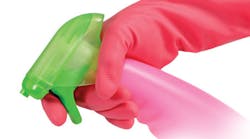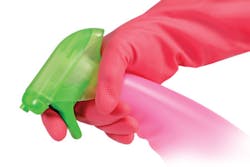By Olivia Wann, JD, RDA
In 2016, the Centers for Disease Control and Prevention (CDC) published the “Summary of Infection Prevention Practices in Dental Settings: Basic Expectations for Safe Care.” This helpful new guide summarizes the infection control guidelines published in 2003.
Let’s get back to basics. It all starts with training. Perhaps you’ve heard a dental team member make this statement when you try to provide training on infection prevention and control: “Yeah, we know how to do all that. It’s the same thing every year.”
According to CDC, the documented transmission of bloodborne pathogens highlights the need for comprehensive training.1 We never graduate from learning and never stop benefitting from helpful reminders. Download the Summary and review it carefully with your staff, including the “Infection Prevention Checklist.” Training should take place as part of the new-hire process and thereafter at least annually.
As a consultant conducting assessments in hundreds of dental offices, I see common challenges. The words we read don’t exactly jump off the page and materialize into easy, breezy compliance. Compare your working world with the examples that follow. See how well your practice is doing in the world of infection prevention and control.
PPE and utility gloves - One of the elements to assess is if dental employees receive training on proper selection and use of personal protective equipment (PPE). This sounds pretty basic, doesn’t it? However, in analyzing workflow for practices, I’ve noticed that a common challenge for dental employees in many practices is wearing utility gloves. Often, the dental assistant or hygienist transfers the contaminated instruments to the sterilization area while wearing the same patient exam gloves worn during the procedure. This is not in compliance.
According to the CDC, puncture- and chemical-resistant heavy-duty utility gloves should be used for instrument cleaning and decontamination procedures to minimize the risk of sharps injuries and provide greater protection during the handling of disinfectants.1 This raises the question: When exactly do we wear the utility gloves?
The Organization for Safety, Asepsis and Prevention (OSAP) has provided clarification:
- Following treatment of the patient, change into utility gloves
- With the utility gloves in place, isolate and remove the instruments.
- Transport the instruments to the sterilization area in a leak-proof container with solid sides and a solid bottom.
- Remove and dispose of barriers.
- Remove the waste.
- Then wash the utility gloves to decontaminate them.
- Next, clean and disinfect instruments while wearing the utility gloves.
- When this is completed, wash your hands, and don patient exam gloves.2
Automatic cleaning - Using instrument management cassettes, we can minimize how often dental office employees handle contaminated instruments and thereby reduce the potential for injuries. Rather than handling the contaminated instruments again to place them in the ultrasonic or instrument washer, place the entire cassette into the unit for automatic cleaning. Cassettes also minimize breakage of instrument tips.
Automatic cleaning is preferred instead of hand scrubbing, although some express concern that instruments are not clean enough with automatic cleaning. One of the challenges I’ve observed is that the worker might not have time to immediately clean the operatory and process instruments if he or she needs to go to the next exam room where a patient is waiting. I’ve observed up to a two-hour delay in instrument processing in large, busy practices.
In these situations, you may find it helpful to use an enzymatic spray gel. This product prevents blood and body fluids from drying onto the instruments and prevents the need for a presoak. It also works as a corrosion inhibitor. Otherwise, prepare a holding solution with an enzymatic cleaner.
Enzymatic cleaners - For your ultrasonic unit, use a dual-enzymatic detergent that contains a corrosion inhibitor, such as Steelgard, to protect against harmful minerals found in water that contribute to buildup, spotting, and corrosion.
Whether you use an ultrasonic unit or an automatic instrument washer, test the performance. If the unit is not functioning properly, the cleaning process may be ineffective, requiring office employees to resort to hand scrubbing. Cleaning monitor strips that contain a test soil, which mimics the presence of blood and tissue, can be used for testing. For example, ultrasonic cleaning monitor strips assess cavitation, time, temperature, and amount of detergent. If the test soil is removed, then you can be assured that the ultrasonic is operating properly. Test at least daily.
Adherence - When you review the CDC summary, know that it is key to assess your office’s adherence to each element. The tools provided in the summary, including the checklist, can empower your staff to get back to the basics and implement a thorough infection control and prevention program. RDH
OLIVIA WANN, JD, RDA, attended Tennessee Technology Center as a registered dental assistant and earned a bachelor’s degree in health-care administration from Saint Joseph’s College. She graduated from the Nashville School of Law with a doctorate in jurisprudence and is licensed to practice law in Tennessee. In 2000, she founded Modern Practice Solutions, which is dedicated to the compliance issues of dental practices. For more information visit DentalComplianceTN.com or send an e-mail to [email protected].
References
1. Guidelines for Infection Control in Dental Health-Care Settings - 2003. Atlanta, GA: Centers for Disease Control and Prevention, US Department of Health and Human Services; 2003.
2. OSHA and CDC Guidelines: Combining Safety with Infection Control and Prevention for Dentistry. 4th ed. Atlanta, GA: Organization for Safety, Asepsis and Prevention.







